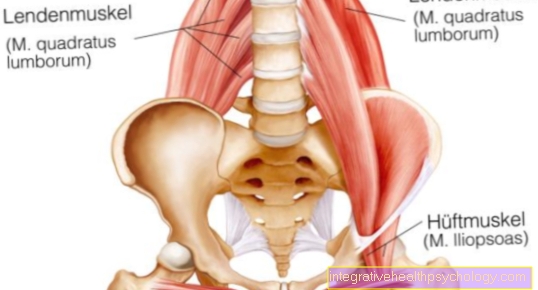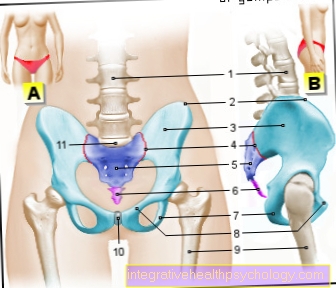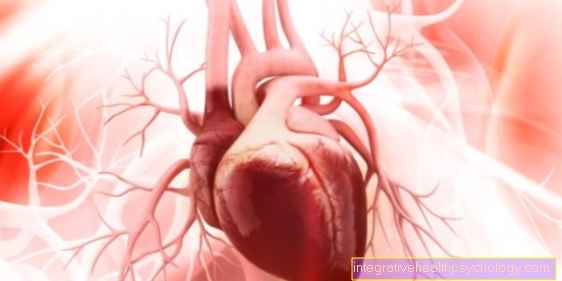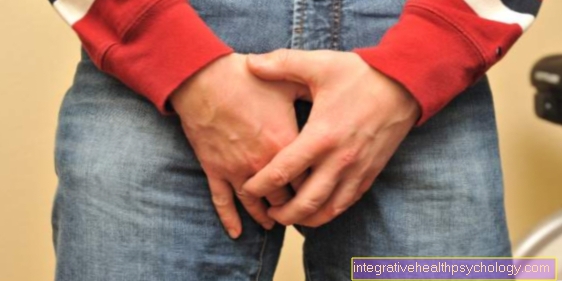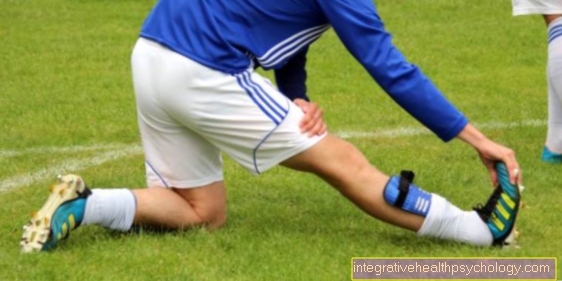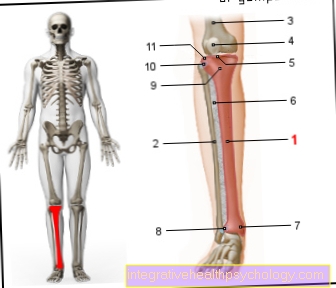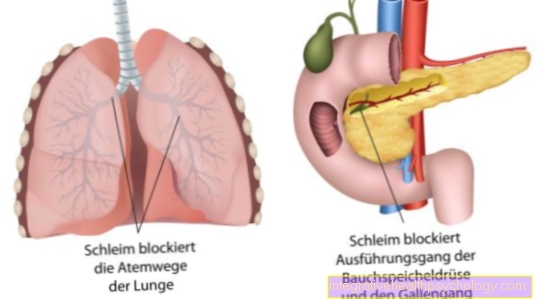Proper dental care
introduction
The best prophylaxis of Caries and periodontal disease is proper dental care. It removes the bacterial plaque and ensures that the bacteria responsible for dental diseases are removed. The appropriate tools for the dental care is provided by the industry. Also read our topic professional tooth cleaning.

What dental care products are there?
With today's understanding of oral health, sustainable and thorough oral hygiene is essential. Everyone should try to keep their own teeth as long as possible by taking good care of them. The focus is always on the toothbrush and toothpaste, which cannot be replaced by anything.
A distinction is made between manual toothbrushes, electric brushes, sonic and ultrasonic brushes. The selection of toothpastes is also extremely extensive. In general, it should be ensured that the fluoride content is 1450 ppm and the RDA value is low. This value describes the particle size within the toothpaste and thus the abrasive effect. Whitening toothpastes always have a very high RDA value, which is why it is not advisable. An RDA value between 35 and 60 is ideal for daily use, anything beyond that is harmful in the long term.
But toothpaste and toothbrush alone are not enough to clean the spaces between the teeth. Dental floss and interdental brushes are available for this; There is a special Superfloss dental floss for dental prostheses in order to optimally clean pontics. The spaces between the teeth can also be cleaned with an oral irrigator. There are also tongue cleaners to loosen the tongue coatings and remove bacteria.
Read more on the topic: Remove tongue coating.
Mouth rinses and mouthwashes are available to clean the soft tissues and especially the gums. Mouthwashes are not suitable for reducing the amount of bacteria, they usually only cover unpleasant smells. The active ingredient chlorhexidine digluconate is important for mouth rinsing solutions, as this reduces the risk of tooth decay. The concentration of the active ingredient for daily use should be 0.05%. Concentrations that exceed this value are only suitable for temporary use, a maximum of 2 weeks. In order to additionally protect the hard tooth substance, there are more concentrated fluoride preparations, usually in gel form, which are applied to the teeth once a week.
Read more on the topic: This is how you can remove plaque.
Toothbrushes
The most important tool for cleaning teeth is the toothbrush. There are 3 important distinguishing features of the toothbrush. They are:
- Brush handle
- Brush head
- Brush bristles
The handle should be shaped so that it sits comfortably and firmly in the hand. The industry offers many different shapes, each with their own justification, but everyone should use the brush that feels best. Above all, the handle should not move in the palm of your hand while cleaning. A support surface for the thumb is also good.
The brush head should be short. With a short head you can get to each individual tooth more easily, and above all the inner sides of the teeth can be reached more easily. A long brush head does not take into account that the teeth are arched, this is especially the case in the canine area. The insides of the teeth cannot be reached optimally either.
The brush bristles are of crucial importance. In the past, natural bristles were often offered. We now know that natural bristles are not suitable. They cannot be rounded and they have a medullary canal in which bacteria feel extremely comfortable and multiply. That is why only plastic bristles that have no tips are used today, as they can be rounded and also have no hiding places for bacteria. The bristles are attached to the brush head in tufts. You are flexible, but straighten up again immediately. Depending on the bristle arrangement, two groups can be distinguished:
- V toothbrushes
- Multi-tufted toothbrushes.
With the V-brush, the tufts are in an inverted V-position against each other. With the multi-tuft brush, the tufts of bristles are vertical and therefore have a flat surface. These toothbrushes are offered in different configurations. In addition to a flat, even surface, there are those with bristles of different lengths or with softer bristles on the edge and harder in the middle. The aim of these modifications is in all cases to better clean even the hard-to-reach interdental spaces and that Gums to protect. The hardness of the bristles also plays a role. There are soft, middle and hardness Bristles. The toothbrushes with soft bristles are suitable for very sensitive gums, which is rarely the case, or after surgery until the wound has healed. The hard bristles should only be used on people whose gums are particularly resistant, which is also very rarely the case. In the main, the bristles of medium thickness are recommended.
Electric toothbrush
Cleaning your teeth can be just as effective with a toothbrush as with an electric toothbrush. The advantage of the latter lies in the multiple number of correct cleaning movements in the time unit and thus a certain amount of time saved and it suits those interested in technology. The correct cleaning movements are carried out automatically. In children it is a good motivation for dental care. The brush heads can either have a round or a flat bristle field. Like the manual toothbrushes, the brush heads should also be replaced regularly.
In summary, when it comes to toothbrushes, you are always right with a multituft brush of medium hardness, with a short brush head and a brush handle that lies firmly in your hand. It is not necessary to disinfect the toothbrush if it is stored in a dry place. However, it should be renewed every 6 to 8 weeks.
Ultrasonic toothbrush
Ultrasonic toothbrushes differ in their mode of action from other toothbrushes. The ultrasonic toothbrush does not work mechanically, but works indirectly in combination with a special toothpaste. The ultrasonic waves of the toothbrush cause the microparticles in the toothpaste to burst on the surface of the tooth and can thereby loosen plaque deposits. Therefore, the ultrasonic toothbrush does not need to rotate or scrub to clean, it just needs to come into contact with the toothpaste. The vibrations cause the particles to reach every corner of the oral cavity and also clean areas that are difficult to access.
Read more on the topic: Ultrasonic toothbrushes.
Ultrasonic toothbrushes are suitable for all patient groups and can also be used for dental care by children, provided they can brush independently. This is the case from around the age of 8. Due to its mechanism of action, an ultrasonic toothbrush is particularly suitable for patients with sensitive gums, as the cleaning is particularly gentle and thorough. Because the toothbrush does not apply pressure or friction, there is less bleeding; Inflammation of the gums goes back faster. Another group of patients for whom the ultrasonic toothbrush is particularly suitable are those who wear braces. Patients undergoing orthodontic treatment can use the ultrasonic toothbrush to more easily reach areas on the wires or brackets of the braces and clean them more efficiently.
Vegan toothbrushes
Most manual toothbrushes are not vegan as the plastic contains animal fats. However, some vegan toothbrushes are now also available in drugstores. However, these are all manual. Electric brush heads are not yet vegan. The vegan manual toothbrushes are specially declared so that they are easy to recognize. They are made of plastic, bamboo or wood and are slightly more expensive than the non-vegan toothbrushes.
Toothbrushes without plastic
Toothbrushes without plastic are all manual, so far there has always been plastic in electric brush heads. Most vegan manual toothbrushes advertise that they are plastic-free, so they are 100% recyclable. The handle of the toothbrush is made of wood or bamboo, the bristles of nylon. In contrast to the non-vegan toothbrushes, the nylon is made without plasticizers. Children's models are now also available.
toothpaste
In theory, a toothbrush alone could remove plaque without toothpaste, but it would take twice the time. The toothpaste has other properties that make it an indispensable part of oral hygiene. She should:
- Support the cleaning of the teeth
- Bring active ingredients into the oral cavity
- Make brushing your teeth more comfortable
There are 2 different groups of contents for toothpaste, the
- Active ingredients
- Auxiliary materials
The formulation of a toothpaste is complex because the ingredients have to be compatible and stable with one another. Fluoride is at the top of the list of active ingredients and is an indispensable component of a toothpaste. Fluorides protect the tooth enamel from acid attack by hardening it and help to remineralize small damage to the enamel. The cleaning bodies help to clean the teeth. It is prevalent today, among other things Silica d. H. Silicic acid, which is available in different degrees of hardness. Foam-forming substances, such as Surfactants, loosen the plaque and make cleaning more pleasant thanks to their foaming effect. However, it should not be dosed too high, as this can damage the gums. Medical toothpastes also contain ingredients that serve not only to prevent tooth decay, but also to prevent gum disease. Bacteria-inhibiting substances prevent inflammation or support wound healing. The auxiliary substances ensure that the pasta does not dry out, remains stable and the ingredients do not enter into any chemical reaction. There are also taste corrections like mentholthat also make brushing your teeth more pleasant.
There are special toothpastes for children because they have a different taste perception. The toothpastes for adults seem too sharp to the children and are therefore rejected by them. That's why they added a fruit flavor and made the paste sweet, not with sugar, of course, but with sugar substitutes. In addition, it must be taken into account that the children are given fluoride tablets in many cases, which is why the fluoride concentration in children's toothpastes is lower. Also because they swallow much more toothpaste than adults.
Find out more about: Fluoridation of teeth.
Floss
Cleaning the spaces between the teeth is difficult with a toothbrush. The floss was developed for this. It can be used to clean the interdental spaces from deposits. The dental floss is available waxed or unwaxed, and there is also dental floss with fluoride. Which one you take is up to you, all serve their purpose. Different dental floss holders are available in stores. This is intended to facilitate use, particularly in the rear regions of the oral cavity. Each of these holders has its advantages and disadvantages, unfortunately there is no optimal solution.
Read more on the topic: Floss.
Toothwood
The toothpicks / toothpicks offered by the industry today are mostly made of plastic. They are also used to clean the spaces between the teeth and remove food residues. Above all, it is important that they are not pointed, but rounded at the tip in order to avoid injuries to the gums. For this reason, the wooden toothpicks offered in some restaurants should be discarded, as they can cause injuries due to their sharp ends.
Interdental brushes
These brushes contain only a single tuft of bristles. Like dental floss and tooth sticks, they should also be used to clean the spaces between the teeth. They are particularly helpful for bridge constructions, as they can also clean areas that are difficult to reach with a toothbrush. This also applies to implant-supported fixed prostheses.
Plaque coloring tablets
With the coloring tablets you can color the otherwise difficult to see plaque and thus make it visible. This is especially impressive when done after cleaning. The application is particularly popular with children.
Oral irrigators
The oral irrigator is not a substitute for brushing your teeth. So it cannot replace the toothbrush. However, it is suitable for removing food residues from between the teeth. Disinfectants or antiseptics such as chlorhexidine digluconate can also be added to the irrigator. Dental plaque cannot be removed with the oral irrigator. For more information on this topic, see Oral Irrigator
Mouthwash
Mouthwash should above all create a feeling of freshness in the oral cavity. If medicinally active substances are added to it, they can also be used to treat inflammatory gum disease, in no way can they remove plaque.
Tooth gel
Another product that can support teeth and gums are so-called tooth gels. They have different areas of application and are used, for example, to relieve pain in exposed tooth necks or to prevent tooth decay. Tooth gels can also help with discomfort during the tooth.
Find out more about this topic at: Tooth gel
Orozyme dental care gel
Orozyme dental care gel is a product specially made for the oral hygiene of dogs and cats, which keeps the microflora of the dentition in balance and protects the animal from tooth and soft tissue diseases. Peroxidase, an enzyme found in Orozyme tooth gel, can loosen plaques and prevent tartar. Furthermore, the coarser particles in the gel have an abrasive, smoothing effect on the teeth. The gel should be applied daily, ideally after the last meal in the evening, into the oral cavity of the dog or cat. The weight of the animal determines the amount that can be applied. The application alone is sufficient; mechanical training, for example with a toothbrush, is not necessary. An ingredient ensures that the gel does not immediately reach the digestive tract and remains in the oral cavity for a longer period of time in order to work optimally. Veterinarians recommend Orozyme tooth gel primarily as a dental care product for dogs or cats. Use in humans is not indicated and would damage the oral flora. The natural bacteria in the oral cavity of cats and dogs differ from those of humans, which is why the ingredients, which are specially tailored to the animal oral flora, can cause damage when used in humans.
chewing gum
Chewing gum cannot remove plaque. However, chewing stimulates the secretion of saliva, which has a certain effect on remineralization due to its calcium content. If you use chewing gum, you should make sure that it does not contain sugar, but xylitol.
Read more on the topic: chewing gum
Does the toothbrush need to be disinfected?
After brushing your teeth, it is sufficient to rinse the toothbrush with water to clean it sufficiently. Since most bacteria do not multiply in a dry environment, there is little chance that germs will settle there after the toothbrush has dried. It is therefore not necessary to disinfect the toothbrush. Furthermore, contact of the mucous membrane with disinfectant would be damaging, as the high alcohol concentration would dry out the mucous membrane and change the pH value. It makes more sense to change the toothbrush every two to three months, depending on how it is used, in order to ensure optimal oral hygiene.
How often should the toothbrush be changed?
The regular replacement of the toothbrush or the plug-on head of electric brushes is important in order to maintain cleanability and to achieve consistently good cleaning results. One should follow the rule of thumb to replace the toothbrush every two to three months, as it will be worn out after this period. The time intervals can also be shorter for some patients if, for example, they exert more pressure when brushing and the toothbrush therefore wears out more quickly. The bristles are then frayed, which can irritate the gums when brushing. Studies show that the cleaning function is no longer optimal when it is worn out and that bacteria therefore remain on the teeth and gums after brushing. These can cause tooth decay and inflammation of the gums. There are also models, both manual toothbrushes and electric toothbrushes, in which the color of the brush head changes and thus signals that an exchange is necessary.
Gum pain in care - causes and treatment
One reason for pain when brushing your teeth can be too forceful brushing behavior. If too much force is exerted, the gums are constantly irritated. Small mechanical injuries occur that hurt when brushing your teeth. To prevent this problem, an electric toothbrush with a pressure sensor, an ultrasonic toothbrush or a soft manual toothbrush are suitable. Furthermore, inflammation of the gums also causes unpleasant discomfort when brushing your teeth. This is likely if the gums are red, swollen, and tender. After the inflammation subsides, the symptoms of brushing your teeth should go away. Pain when brushing your teeth also occurs with burned or mechanically injured mucous membranes, for example from very hot or spicy food. After the defects have healed, the pain subsides. Furthermore, carious teeth can cause discomfort during daily oral hygiene that can only be alleviated by filling therapy. A tooth root inflammation can also trigger pressure pain when brushing your teeth, which can only be eliminated by dental therapy, in this case a root canal treatment.
Read more on the topic: Pain in the gums.
Dental care for gingivitis
Since gum inflammation is bacterial in the majority of cases, thorough cleaning and good oral hygiene are essential to get better. Brushing your teeth two to three times a day is necessary to remove the bacterial plaque from the teeth. The gums and teeth need to be cleaned thoroughly, even if the contact with the toothbrush is painful. Simply brushing your teeth is not enough, however, as the swollen gums create “loopholes” that the toothbrush cannot reach. Dental floss or interdental brushes must be used for these so-called pseudo-pockets, so that all food residues between the teeth and under the swollen gums are removed and thus do not represent a breeding ground for bacteria.
Read more about the topics: Causes of inflammation of the gums and Pain associated with inflammation of the gums.
In addition, the dentist usually prescribes a two-week therapy with a mouth rinse solution containing 0.2% chlorhexidine digluconate for inflammation of the gums. Rinsing with this in the morning and in the evening for two weeks kills the bacteria and reduces plaque. The chlorhexidine digluconate promotes a reduction in the number of germs in the entire oral cavity. The supportive use of the mouthwash solution for brushing teeth leads to a regression of the gingivitis. If the inflammation is localized only in one or a few places, the application of gel or fluid products with the same active ingredient can also achieve a cure. A dentist should always be consulted for the right therapy in the case of inflammation of the gums, as well as if the symptoms persist two weeks after the start of therapy.
Read more about the topics: What helps with inflammation of the gums? such as Home remedies for gum inflammation.
Swollen gums - what to do?
Swollen gums can have multiple causes. Swelling of the entire gums is usually caused by gingivitis, an inflammation of the gums. This may have been caused by bacteria, so thorough oral hygiene and a supportive two-week use of an antiseptic mouthwash solution are recommended. Periodontitis, a generalized inflammation of the periodontium, can also cause swollen gums. In this case, only targeted therapy by the dentist can help, who cleans all gum pockets and, if necessary, also fights the bacteria with antibiotic therapy. Swelling of the gums (so-called gingival hyperplasia) can also be a side effect of certain drug groups. Localized swelling can be caused by inflammation of the roots of the tooth or cysts on the gums. Therapeutically, a cyst can be surgically opened by a dentist or oral surgeon so that the inflammatory secretion can drain off, or the entire cyst can be removed. In general, it is advisable for patients with swollen gums to gargle with rinses containing chlorhexidine to prevent bacteria from settling in the oral cavity. If the swelling does not subside after two to three days, the dentist must be visited.
Burned Gums - What To Do?
Cooling is an immediate measure after a burn of the palate or cheek. It is best to rinse directly with cold water or, if available, suck on ice cubes. Furthermore, dairy products are recommended, which neutralize even with particularly spicy dishes. The latter cause small micro-burns and can be compared to localized burns. Therefore, in the first few days after the burn, you should avoid spicy food as this would exacerbate the symptoms. Hot drinks or food, as well as acidic foods, should be avoided in the initial period of healing in order not to provoke subsequent irritation of the already wounded area. The person affected should only eat lukewarm food and can use home remedies to promote wound healing.
This includes rinsing regularly with diluted chamomile extract or sage to soothe the affected area. Regular flushing is important so that bacteria do not attach to the wounded area and infect it. Antibacterial mouth rinses are therefore suitable to promote healing and to protect against wound healing disorders due to infection. Severe burns with massive blistering, severe pain and swelling should be assessed and treated by a dentist. A guideline is that minor burns heal within a week due to the good regenerative capacity of the oral mucosa. Deeper burns can take longer to heal. If the tongue and the taste buds or nerves are injured, a lack of sensation and taste are possible. Regeneration is only possible to a limited extent, depending on the extent of the damage.
Care of gingival pockets
Existing gum pockets are difficult or impossible to clean for those affected, depending on their depth. Bacterial inflammation creates localized or generalized pockets. The gums are not firmly attached to the tooth root, but rather loose, so that a gap is created in which the bacteria can accumulate. The gingival pockets are not only a loophole for bacteria, but also for food residues, which, if left, represent a breeding ground for further bacterial growth. Minimal inflammation and gingival pockets can be cleaned independently with dental floss and interdental brushes. In the beginning there may be increased bleeding, but an improvement occurs quickly. In addition, the supportive use of mouth rinses containing chlorhexidine digluconate is advisable, which can accelerate the decrease in gingivitis. Only the dentist can reach deep gum pockets. He can deeply clean and disinfect them with hydrogen peroxide or saline solution so that the bacteria are eliminated. To relieve the inflammation, an ointment containing cortisone is also applied to the bag, which inhibits the body's immune response and thus alleviates the symptoms of inflammation.
Read more on the topic: Gingival pockets.
What can I do with receding gums?
Recession of the gums, known medically as a recession, is often the result of poor dental care. The most common reason for recessions is brushing your teeth too hard. A wrong scrubbing movement and too much force will irritate the gums and pull them back. This phenomenon occurs primarily in the tooth neck region, where the gums are very thin. Patients who have undergone orthodontic treatment are particularly affected because the change in position of the teeth means that the gums of these patients are thin and sensitive.
As countermeasures, a soft toothbrush and getting used to a gentle toothbrushing technique, in which the brush is mainly from “red to white”, help so that the gums are not subjected to excessive pressure. An electric toothbrush with a pressure sensor can also help you learn to brush with less pressure. The toothbrush will stop immediately or light up if too much force is used. However, these measures only serve to prevent the recession from progressing. There is no remedy to reverse the receding gums.
The only therapy that can cover the defect is surgical crown lengthening. The receding gums are covered by a connective tissue transplant from the patient's palate. After a healing time of one to two weeks, the gums will be reconstructed again, but care should be taken to brush your teeth gently afterwards so that the transplant heals well and does not also retract. If a recession has occurred due to a tooth displacement, only an orthodontic movement to the original position will help. The movement of the tooth can stimulate the gums to form new cells and to multiply again slightly. In the majority of cases, however, an additional connective tissue transplant is necessary in order to achieve an aesthetically pleasing and high-quality result.
Read more on the topic: Tooth neck is exposed - what to do?
Home remedies for receding gums
In the case of receding gums or so-called recessions, symptoms of hypersensitive areas occur in the event of thermal stimuli that make eating cold dishes unbearable. There are no home remedies that can bring the retracted gums back to their original location. In the dental practice, this is only possible with surgical connective tissue transplants. However, home remedies can help relieve symptoms. Clove oil, sage and chamomile as a diluted rinse or tincture can temporarily reduce symptoms, but no home remedy helps in the long term. The cause of the pain are open dentinal canals (dentin canals) that are usually covered by the gums. As it recedes, they are exposed and can only become less sensitive by blocking them. This can only be achieved at the dentist's with a sealing compound that closes the dentinal canals so that stimuli are more poorly transmitted. In the long term, however, this protective layer also wears out, so that as a permanent solution, only a surgical intervention leads to freedom from symptoms.
Read more on the topic: Tooth neck is exposed - what to do?
Dental care in the baby
When the first milk tooth erupts at around 6 months of age, it is necessary to clean your child's teeth twice a day. There are also special dental care sets for babies who slowly learn to brush their teeth. This includes special toothbrushes with soft nubs that babies can chew on if the gums are painful during teething. The initial toothbrushes slowly introduce the babies to brushing their teeth and the baby can learn the ritual of brushing their teeth in a playful way. The initial toothbrushes are so soft that the baby cannot injure himself with them. Furthermore, a neutral-tasting toothpaste should be used especially for babies, so that an unpleasant taste cannot negatively affect the child. Thorough cleaning by the parents is essential when taking care of babies' teeth in order to prevent bad breath in the baby and bacterial plaque formation.
Read more about the topic at: Dental care in the baby and Brushing the baby's teeth.
Dental care in the child
At two and a half years of age, full milk teeth are present in small children. Brushing your teeth twice a day is a must from the very first baby tooth. At the beginning, the parents have to brush again, as the toddler learns how to thoroughly clean their teeth only gradually. The older the child, the more independent it becomes. Children are only able to take care of their teeth independently from the age of around 8. Before doing this, it is advisable for the parents to check or, if necessary, to clean again.
Both a normal children's toothbrush and an electric toothbrush for children can be used. There are special toothpastes with lower fluoride concentrations for deciduous teeth. From the eruption of the permanent teeth between the ages of six and twelve, a conventional toothpaste with a fluoride content of 1450 ppm may be used. It is also important to use a highly concentrated fluoride gel once a week to protect the hard tooth substance and prevent tooth decay. The use of dental floss is also advisable after the eruption of the permanent teeth in order to optimally clean the interdental spaces. If the application with dental floss is too difficult, interdental brushes can be used. In addition to daily oral hygiene, the child should have a dental check-up twice a year in order to internalize how to brush their teeth properly with the help of professional support.
Read more on the topic: Dental care in children.
Dental care with fixed braces
With fixed braces, oral hygiene is restricted and made difficult by the orthodontic equipment. In order to optimally clean all areas within the oral cavity, special aids are therefore required. However, the basis of dental care is mechanical cleaning with a toothbrush. Cleaning is simplified by using electric toothbrushes and, above all, ultrasonic toothbrushes as well as specially suitable toothpastes. The vibrations of the toothbrush transport their particles into the smallest of angles, which cannot be reached with a conventional toothbrush. Simply cleaning with a toothbrush is not enough if you have fixed braces. Areas under the wire or brackets must be cleaned with floss and interdental brushes. There is no need to buy special interdental brushes for braces wearers, the conventional ones in a small size are sufficient. In addition to these daily cleaning methods, weekly fluoridation with a gel product is advisable in order to protect the teeth from caries through remineralization. The fluorides and salts can be absorbed into the tooth enamel and strengthen the tooth structure.In addition to fluoridation, a mouth rinse solution can also be used regularly to keep the oral flora in balance and to promote oral hygiene. Attention should be paid to a low concentration (0.05%) of the active ingredient chlorhexidine digluconate, which sustainably promotes oral health and also protects against tooth decay and periodontal diseases.
Read more on the topic: Clean braces.
Care for a gum cyst
A gum cyst has to be opened by a surgical procedure so that the secretion is removed. In advance, the person affected should make sure to chew soft food on the unaffected side so that little leftover food has a chance to settle in the region. After the relief incision, either a so-called cystostomy, in which the secretion is drained, or a cystectomy, in which the entire cyst is removed. Then the patient should cool the area from the outside so that the inflammation subsides more quickly and no severe swelling develops. Mouth rinses containing chlorhexidine digluconate can also help remove the bacteria in the oral cavity and restore healthy oral flora. Despite the procedure, the teeth have to be brushed, but only very carefully in the affected region. The area that has been sutured should not, however, be irritated with the toothbrush.
Read more on the topic: Jaw cyst.
Which dental care sets are recommended?
Dental care sets are particularly recommended as special learning sets for babies in order to slowly introduce the child to proper oral hygiene. The babies gradually learn how to use toothbrushes and toothpaste, which develops and promotes good oral hygiene right from the start. Dental care sets for adults should enable professional teeth cleaning at home. The basic equipment is based on an ultrasonic toothbrush with various programs and attachments for the tongue, gaps and an oral irrigator. These dental care sets contain everything that is needed for thorough oral hygiene and are therefore recommended, but not a must. Furthermore, the set cannot replace professional teeth cleaning at the dentist, as there are limits to one's own abilities compared to the possibilities of a specialist.
Read more on the topic: Buying a dental care set - makes sense?
White gums - what to do?
White discolored gums can be caused by multiple factors. Punctual whitish spots on the gums can indicate an insufficient supply. The area in question is poorly supplied with blood, for example due to smoking or pressure (e.g. due to a too long crown) and in the worst case it can die because it is not supplied with nutrients. Larger areas of white discolouration that cannot be wiped off can indicate leukoplakia or a systemic disease. Leukoplakia is a cornification disorder of the oral mucosa. Various systemic diseases can cause whitish changes in the oral mucosa.
Read more on the topic: Leukoplakia - What are the Dangers?
Medicines can also cause whitish changes in the gums. The whitish discoloration can also be caused by malignant changes. If the white coating can be wiped off, it is most likely caused by a fungal infection. This so-called oral thrush must be treated with appropriate medication. In general, it is strongly recommended to consult a doctor if there is a whitish change in the mucous membrane. If the change does not go away by itself after one to two weeks, the cause must be clarified. For a reliable diagnosis, a sample is often taken from the affected area and examined microscopically.
Gums fester - what to do?
If pus emerges from the gums, see a dentist immediately. The formation of pus usually indicates a long-standing inflammation or an abscess on the tooth (an encapsulated collection of pus), which must be treated by a dentist. Pus is made up of dead white blood cells, which are usually critical to the immune response and fight inflammation. The pus must be drained to relieve symptoms such as pain and tightness. In addition to a relief incision and antibacterial rinsing (e.g. Chlorhexamed® forte), the dentist or oral surgeon may use an antibiotic to prevent the infection from spreading and to kill the bacteria more quickly. In general, quick action is indicated in the case of pus formation. If you wait too long, there is a risk that the bacteria from the inflammation in the oral cavity will get into the bloodstream and cause life-threatening blood poisoning (sepsis).
Read more on the topic: Inflammation of the gums with pus.
Summary
There are a number of different aids for daily dental care. Surely not everyone will use all of them, but will choose those that suit them most. However, a toothbrush and toothpaste as well as suitable instruments for cleaning the spaces between the teeth are essential. The toothpaste must contain fluoride, the most important prevention against tooth decay.

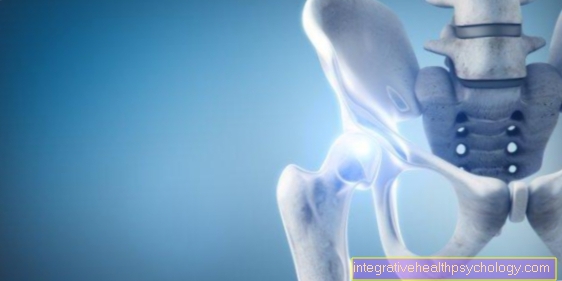

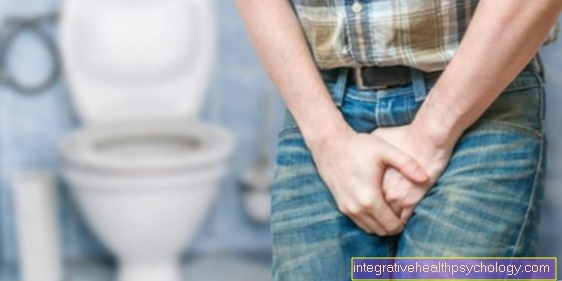
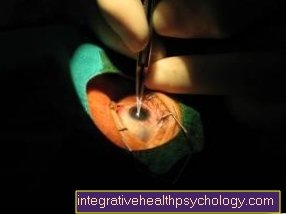




.jpg)

